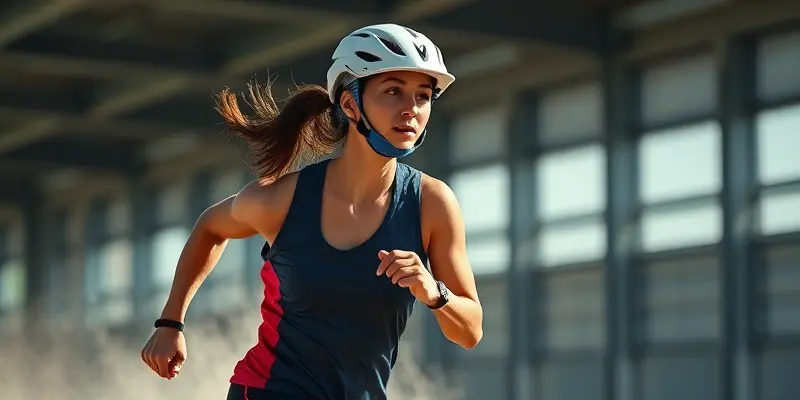How Alex Morgan’s Comeback from ACL Injury Can Inspire Your Recovery
Recovering from a major injury can feel overwhelming. But with the right mindset, strategies, and support, you can return stronger than ever. Let’s take inspiration from soccer superstar Alex Morgan, whose journey from a devastating ACL injury to World Cup champion offers valuable lessons for athletes and fitness fans at every level.
The Power of Resilience: Learning from Alex Morgan
Alex Morgan tore her ACL as a high school senior—a moment that could’ve ended her soccer dreams. Instead, she used determination, diligent rehab, and mental toughness to return to elite sports. Her story proves that setbacks can spark comebacks.
What can we learn from Alex’s recovery process?
- The importance of a structured rehab plan
- Staying motivated during setbacks
- Leaning on a support system for both body and mind
Key Steps in Injury Recovery and Prevention

1. Surgery and Rehabilitation: The Foundation for Healing
For ACL injuries like Alex Morgan’s, surgery is often the first step. But success depends on what comes after: months of targeted rehab.
- Physical Therapy: Consistent exercises improve strength, flexibility, and joint stability.
- Gradual Progression: Pushing too hard can cause setbacks. It’s vital to follow a staged plan, revisiting techniques as your body heals.
- Tools for Recovery: Resistance bands, balance boards, compression sleeves, and even cryotherapy can speed up healing and reduce discomfort.
Practical example: Building quadriceps and hamstring strength post-surgery can reduce the risk of re-injury and accelerate your return to training.
2. Conditioning and Nutrition: Building a Stronger Body
Preventing future injuries means making your body more resilient.
- Prehab Exercises: Adding single-leg squats, lunges, and core drills, even before injury, helps bulletproof your knees and keep your muscles balanced.
- Healthy Diet: Protein supports muscle repair, while omega-3 fatty acids can help manage inflammation. Don’t forget hydration and micronutrients like calcium for bone strength and vitamin D for bone health.
Tip for all levels: Even beginners can benefit from these practices—they’re not just for the pros.
Mind Over Matter: The Psychology of Recovery
Returning to sport is as much a mental challenge as a physical one. Alex Morgan has spoken about the role of positivity and goal-setting in her journey.
1. Set Short- and Long-Term Goals
- Short-term: “Today, I’ll flex my knee five more degrees” or “I’ll walk to the mailbox pain-free.”
- Long-term: “I’ll get back on the field in six months” or “I’ll run a 5K again.”
Tracking progress, however small, keeps motivation high.
2. Build Your Support Team
- Work with Experts: Physical therapists, coaches, and sports nutritionists can guide your rehab.
- Lean on Community: Connect with fellow athletes—online or in person—who are overcoming similar injuries.
3. Stay Positive (But Realistic)
There will be tough days. Alex Morgan kept her eyes on the future, but also gave herself grace during setbacks. Mental resilience isn’t about ignoring the struggle—it’s about managing it constructively. Visualization techniques can help maintain this positive mindset, as explored in our blog on visualization for healing.
Practical Tools and Strategies for Every Athlete
1. Rehab Gadgets Worth Trying
- Resistance Bands: For joint-safe strength-building.
- Compression Sleeves: Reduce swelling and promote circulation.
- Balance Boards: Improve stability and proprioception.
2. Psychological Boosters
- Journaling: Write down daily wins (even “I did my stretches!”)
- Visualization: Imagine your body healing and moving confidently.
- Community Forums: Sharing stories (like Alex Morgan’s) can make recovery less lonely.
Takeaways: Make Your Comeback Game Strong
- Be Patient: Recovery takes time. Trust the process.
- Stay Consistent: Small daily habits add up to big results.
- Embrace Support: Rely on your rehab team and community.
Alex Morgan’s story teaches us that resilience, structure, and support are vital in overcoming injury. Whether you’re returning from a sprain or a more serious setback, use these tools and mindsets to make your own inspiring comeback.
Which strategy feels most important for your recovery journey? Share your thoughts with the GymPulse Club community!
About the Author: This piece was written by a certified trainer and fitness educator with over 10 years of experience in sports rehabilitation and coaching, combining best-in-class science with practical, real-life guidance for athletes of all levels.
